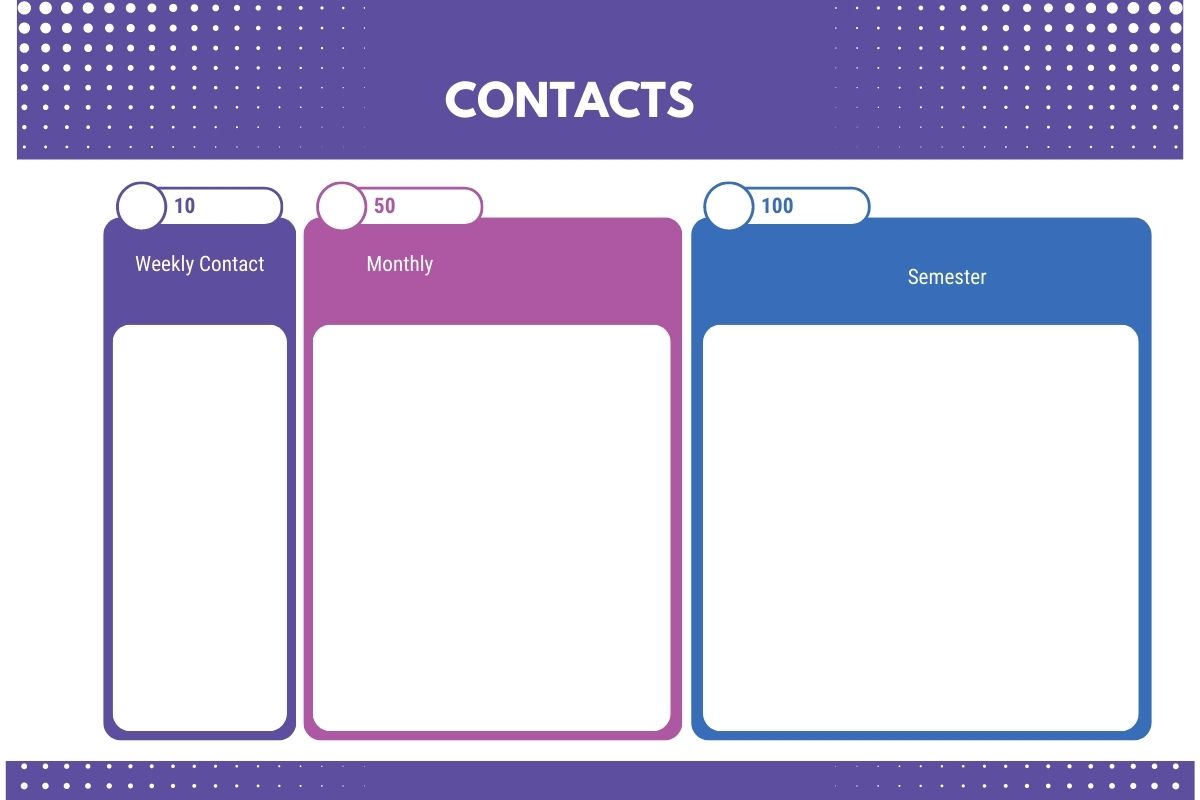Introduction
Networking is a crucial aspect of advancing in any profession. In a world where ‘who you know’ is just as important as ‘what you know’, learning to grow and manage your professional network effectively is essential. Dorie Clark, a well-established author and business communication expert, has developed a robust strategy to help professionals build and manage their networking in a systematic, yet personal way. This blog post aims to explore her strategy and provide tips on how to apply it to improve your career trajectory.
The Art of Networking
Have you ever attended a networking event where you didn’t know anyone and felt uncomfortable? Or someone aggressively tried to push their product onto you? Forget it. That’s not networking. That’s poor networking. I’ll show you how to create genuine, authentic relationships that benefit your business and professional growth.
It’s not about being slick or mercenary. It’s about succeeding by being authentic and connecting with those you genuinely like. I’ll explain how to prioritize your networking, organize your events, follow up, which events to attend, techniques for using social media, and much more.
What You Need to Know
There are no prerequisites, but this blog is designed for professionals to build and nurture a network of contacts. It’s helpful, but not essential, to have a contact list in a spreadsheet, email registry, or contact management system. The key is you wanting to engage and connect with people, not for favor exchanges, but for valuing a diverse set of contacts in your life and knowing that this will bring mutual benefits.
Organize Your Contacts
Consider how many people you’re connected with on social media. Hundreds? Thousands? Trying to network with all of them would be foolish as you wouldn’t have the time to build real relationships. That’s too big a task. Therefore, it’s crucial to prioritize your network. You need to be strategic about how you spend your time.
Prioritize Contacts
One of the first steps to networking effectively is prioritizing your contacts. As Clark suggests, start by organizing the people you know into three categories: Top 10, Top 50, and Top 100. These can include potential clients, influencers, colleagues, mentors, media people, and friends. Spend at least an hour reviewing and categorizing your contacts. Having them systematically organized helps in managing communication and relationships.
Firstly, jot down the names of people who should be in your top 10, top 50, or top 100 contacts. You may have these contacts in your email account, phone, or specialized software. Or just go old-school. Write down on a piece of paper or spreadsheet the names of people who should be in your top categories.

Stay Connected
Now, think about how to keep in touch with them. This can be via email, phone, mail, or in-person, individually or in a group. Schedule a time to connect with your top contacts. The details will vary, but it should be something realistic.
For instance, if you spend a lot of time in the car, you could call one person from your top 100 each day on your drive home. That way, you’d make contact with someone important to you three times a year.
- Choose a method of communication that suits both you and your contact, be it email, phone calls, or in-person meetings.
- Create a schedule to stay in touch, perhaps two or three times a year.
- Make calls while commuting, schedule coffee catch-ups, and reassess your connection strategy annually.
- Regularly update your list, asking yourself if you’ve met someone in the past three months who should be added or if there’s someone who should be removed.
Use Your Time Wisely
It’s essential to ensure your networking activities align with your time management strategies. If you dislike calls, use emails or meetings instead. Make it a habit to review your networking progress every three months and adjust your strategies if needed.
Creating a Meaningful Connection
Before attending networking events, do some research about the attendees. Find common ground, like shared hobbies or interests, to spark meaningful conversations. Show genuine curiosity about what the other person is passionate about to guide the discussion and build rapport.
Once you’re in a conversation, use the common ground. Robert Cialdini, the eminent psychologist, once said that the best way to make a good first impression is to find something in common.
This makes the person see you as a colleague or someone with similar thoughts. It doesn’t have to be a profound connection. It could be as simple as coming from the same neighborhood, attending the same school, having children of the same age, or both being dog lovers. Start with why you’re both at the event and work from there.
When it comes to creating genuine connections, this is a great question: “What are you most passionate about in your current stage of life?” This way, the person can steer the conversation towards something that truly excites them. Whatever it is, if you ask with genuine curiosity, it’s likely you’ll have a great conversation and build a strong connection.
Networking Is About Giving
Remember, networking is as much about giving as it is about receiving. Offer practical help or share information that could benefit the person you’re interacting with. For junior colleagues or friends, provide mentorship and introduce them to others in your network who could help them. Small gestures made with real goodwill can go a long way.
Even when you think you have nothing to give, there’s always something. Offering up-to-date information, fresh perspectives, or even just kind gestures can make a difference. Networking is not about what you can get from someone else. Rather, it’s about what you can give back - be it practical help, strategic connections, insightful information, or simple acts of kindness.
Choose the Right Networking Events
Select networking events that align with your interests and professional goals.
Analyze the environment, attendees, and potential connections you could make. Prioritize quality of connections over quantity, and ensure the event doesn’t interfere with your work-life balance.
Some questions to help guide you through this decision-making process include:
- Who will be attending? This is the most crucial factor to consider when deciding which networking events to attend.
- What are the chances of meaningful connections? Some events are designed for making connections while others aren’t. Look for environments where you can have meaningful conversations with others.
- Is it the type of event you enjoy? Networking should be enjoyable, and you’re more likely to be successful at it if you’re having fun.
- Does the event time suit your schedule? Don’t force yourself into networking at a time that disrupts your daily rhythm and leaves you exhausted.
In essence, the quality of networking events matters more than the quantity.
Manage Your Networking Time
A clever way to optimize networking time is by connecting multiple people with shared interests at the same event.
Start slow, maybe with a networking activity once a week or even once a month if you’re new to this.
Try being creative and connect people who would appreciate it. The standard approach might be to invite someone for a coffee chat, but if you don’t have time for that, invite them to an event you’re already attending. This could be a networking event or a workshop. It’s a quick and easy way to do symbiotic networking, where both of you can benefit.
Organize Networking Events
Organizing your own networking event can be intimidating, but it often proves more effective than attending poorly planned ones. Here are some steps to do it right.
Choose an event type that aligns with your preferences.
Start small and learn from events you’ve attended. Your event does not need to be formal, it can be a dinner, sports activity, or coffee catch-up with a small group of people sharing common interests.
Think about the networking events you’ve enjoyed the most. Why did you like them? What was their format? By reflecting on these questions, you can think of enjoyable events that others would also like to attend.
Decide on the event’s structure. A crucial step is to ensure you personally welcome attendees and introduce them to unfamiliar faces. Set aside time for each person to introduce themselves.
This not only lets everyone know who’s present but also makes the event more comfortable as they now know who they can approach for a discussion.
Use Social Media for Networking
Social media platforms can be excellent tools for networking. Comment on posts, repost, or follow on LinkedIn to strengthen your connections. However, Clark suggests that in-person networking should still take precedence over social media.
Ok, nothing beats face-to-face interaction, but the constraints of time and distance sometimes make this unattainable.
Social media, if used effectively, can enhance your networking efforts significantly. Senior professionals and CEOs often manage their social media accounts personally, making them directly accessible. Regular interactions with their posts can increase your visibility to them and lay the groundwork for a solid conversation when you meet in person.
Create Content and Network
Writing about industry-related topics or people in your field of interest can help you connect with professionals in your domain.
Start a blog featuring interviews with people in your field. Begin with lesser-known professionals before reaching out to more recognized figures.
Follow Up on Contacts
Regularly follow up with your contacts to build stronger relationships. This can be done by staying updated with their personal and professional accomplishments and reaching out to them on these occasions.
Remember, the goal isn’t just to add numbers to your network but to maintain and enhance the quality of relationships.
Of course the excitement of networking is in meeting new people. However, the value lies in maintaining these relationships.
When following up with new contacts, think back to the initial meeting and focus on the main topics discussed. This will give you natural reasons to maintain contact that won’t feel forced. For each primary contact, decide on a suitable follow-up frequency.
Consider how you can deepen relationships with each of them. This could be by inviting them to networking events, sending periodic emails just to say “hello”, or congratulating them on their achievements. Moreover, think about ways you can add value to their lives or careers, maybe some SEO tip or suggesting a new Software Architecture article.
Implement a Networking Plan
Having an action plan in place can greatly facilitate networking efforts. Start by prioritizing your contacts and determining how to deepen each relationship. For every contact, devise a strategy to add value or reciprocate the support they’ve given you.
Conclusion
Effective networking involves a great deal of strategy and intention. It’s not just about expanding your contact list, but about nurturing relationships and contributing to others’ success.
By employing these strategies derived from Dorie Clark’s insights, you can take your career to new heights by leveraging the power of networking.
Remember, networking is a two-way street and the key to successful networking is building relationships on the foundation of giving, sharing, and supporting - it’s about building long-lasting, mutually beneficial relationships..


Comments